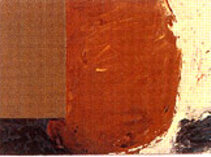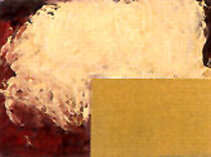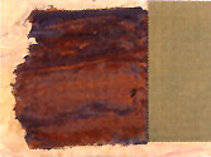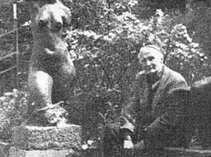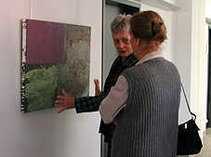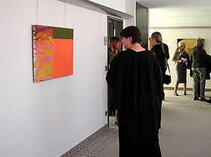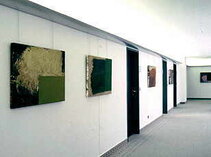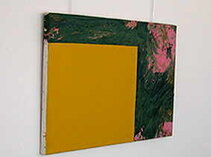Kurt Lehmann and Heinz Thielen
February 3 to April 19, 2002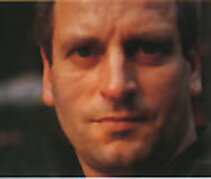
Born in Düsseldorf in 1956, Heinz Thielen studied under K.R.H. Sonderburg at the Academy of Fine Arts in Stuttgart, among others. After completing his studies in 1986, he received a scholarship from the Baden-Württemberg Art Foundation. His large-format paintings offer a fascinating spectrum of gestural-tachist forms in combination with monochrome rectangles. Precisely delineated and colored areas are juxtaposed with high-contrast painterly structures.
Viewers may be attracted by these unusual combinations in order to allow the contrasting pictorial motifs to harmonize. This is precisely what makes the paintings so appealing: The viewers become artists of a self-orchestrated viewing process. They can let the rectangles move across the picture in order to constantly create new pictorial formations or explore sections of the picture.
The fragmentary form created by the composition triggers a rare pictorial dynamic. You feel as if you are taking part in the process of creating the picture and are tempted to assemble the rudiments of form into a complex whole.
Parallel to the painting exhibition, sculptures by Kurt Lehmann will be presented in collaboration with Sparkasse Staufen-Breisach and the Kurt Lehmann Foundation.
Born in Koblenz in 1905, the sculptor moved to Staufen in 1970. He died in Hanover in 2000. The sculptor, who was awarded many important art prizes, received a professorship at the Technical University in Hanover in 1949.
He had been a member of the Deutscher Künstlerbund since 1951. Two years before his death in 1998, he returned to Hanover. Numerous exhibitions accompanied his artistic career. His works can be found in museums, streets and squares in numerous cities.
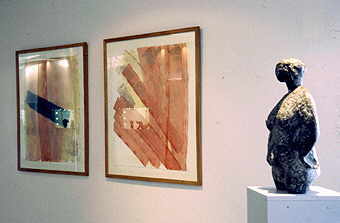
Sculptures by Kurt Lehmann can be seen in the entrance hall.
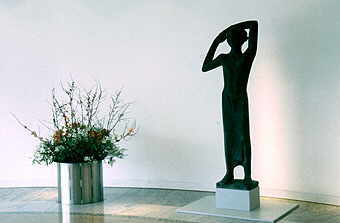
Lehmann's small sculptures illustrate his artistic ability to depict the human figure in changing motifs of movement. The compact figures would also be conceivable as large sculptures. In fact, many of his "miniatures" served as models for larger-scale works.
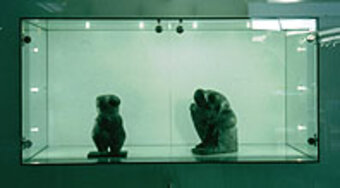
The paintings by Heinz Thielen hang on the attic floor. The encounter between tachist and constructivist elements creates an unusual pictorial dynamic. The confrontation of movement and stillness in a confined space seems to burst the boundaries of the picture. The composition "spills out" and can be experienced as an "expansive phenomenon" when viewed over a longer period of time. The opposites come together to form a harmonious whole.


